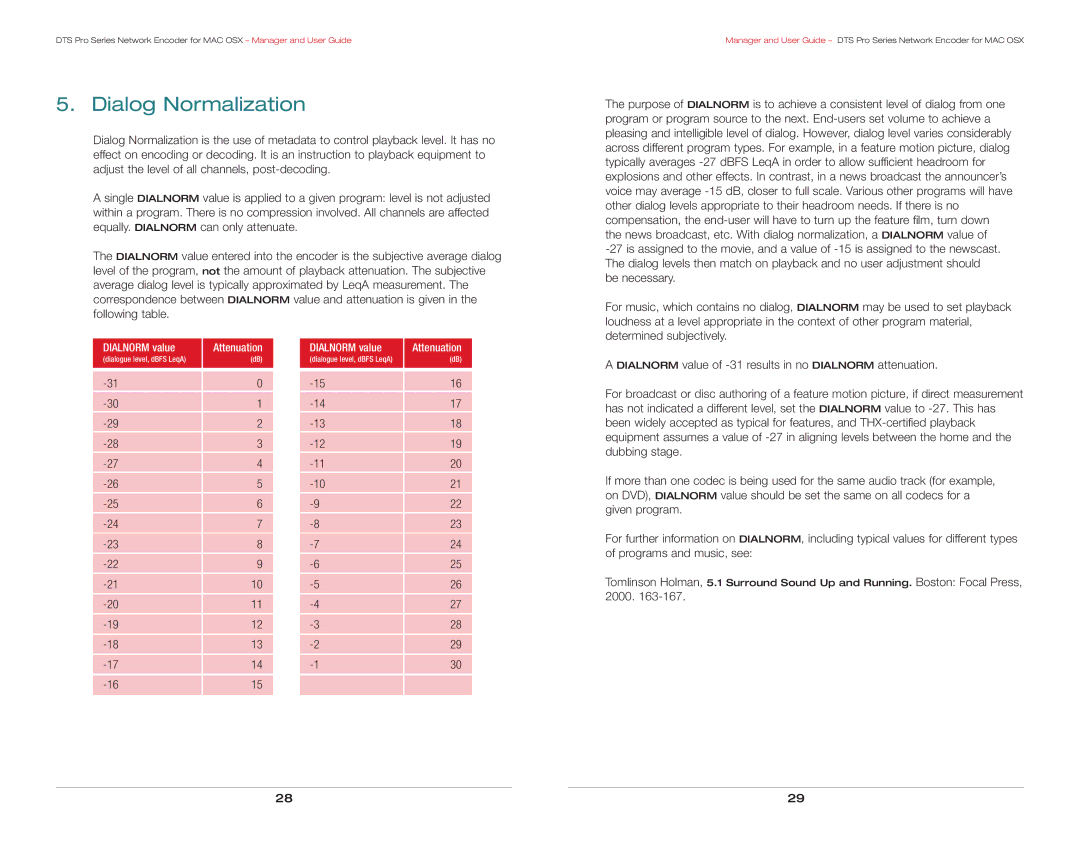
DTS Pro Series Network Encoder for MAC OSX – Manager and User Guide
5. Dialog Normalization
Dialog Normalization is the use of metadata to control playback level. It has no effect on encoding or decoding. It is an instruction to playback equipment to adjust the level of all channels,
A single DIALNORM value is applied to a given program: level is not adjusted within a program. There is no compression involved. All channels are affected equally. DIALNORM can only attenuate.
The DIALNORM value entered into the encoder is the subjective average dialog level of the program, not the amount of playback attenuation. The subjective average dialog level is typically approximated by LeqA measurement. The correspondence between DIALNORM value and attenuation is given in the following table.
DIALNORM value | Attenuation | DIALNORM value | Attenuation |
(dialogue level, dBFS LeqA) | (dB) | (dialogue level, dBFS LeqA) | (dB) |
|
|
|
|
|
|
|
|
0 | 16 | ||
1 | 17 | ||
2 | 18 | ||
3 | 19 | ||
4 | 20 | ||
5 | 21 | ||
6 | 22 | ||
7 | 23 | ||
8 | 24 | ||
9 | 25 | ||
10 | 26 | ||
11 | 27 | ||
12 | 28 | ||
13 | 29 | ||
14 | 30 | ||
15 |
|
| |
|
|
|
|
Manager and User Guide – DTS Pro Series Network Encoder for MAC OSX
The purpose of DIALNORM is to achieve a consistent level of dialog from one program or program source to the next.
be necessary.
For music, which contains no dialog, DIALNORM may be used to set playback loudness at a level appropriate in the context of other program material, determined subjectively.
A DIALNORM value of
For broadcast or disc authoring of a feature motion picture, if direct measurement has not indicated a different level, set the DIALNORM value to
If more than one codec is being used for the same audio track (for example, on DVD), DIALNORM value should be set the same on all codecs for a given program.
For further information on DIALNORM, including typical values for different types of programs and music, see:
Tomlinson Holman, 5.1 Surround Sound Up and Running. Boston: Focal Press, 2000.
28 | 29 |
